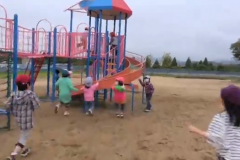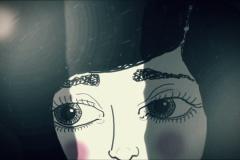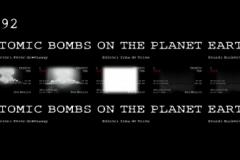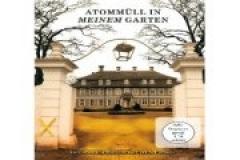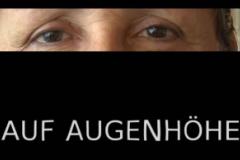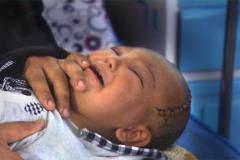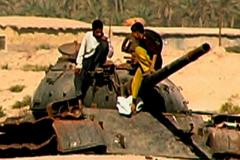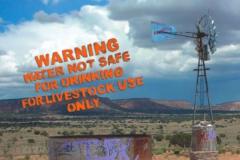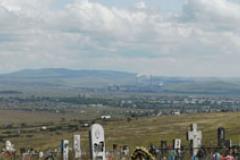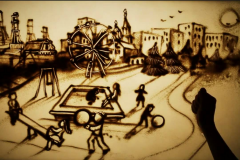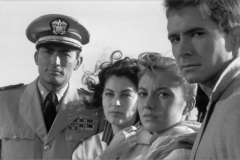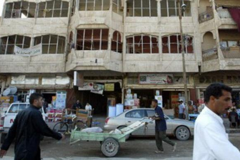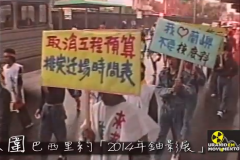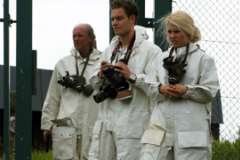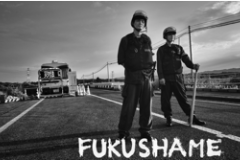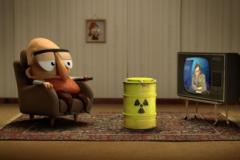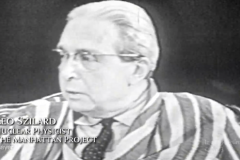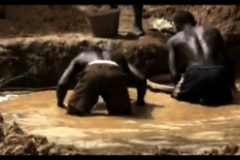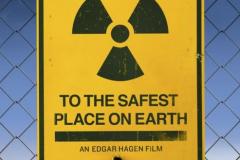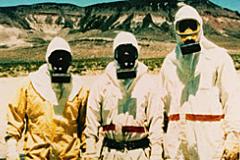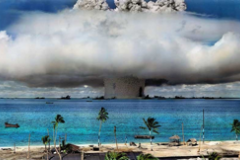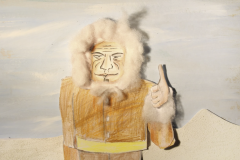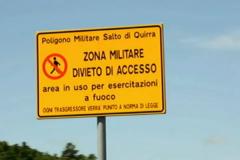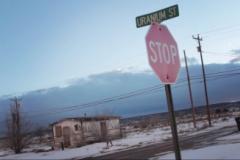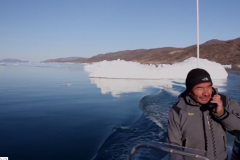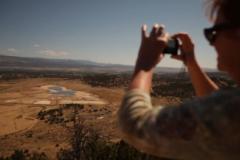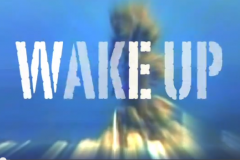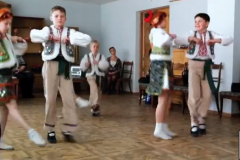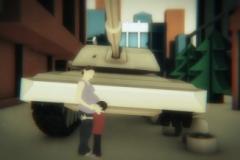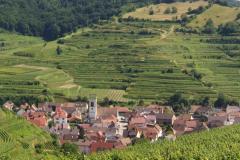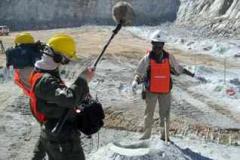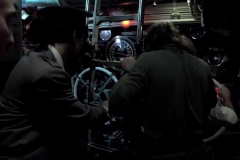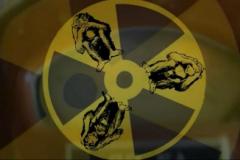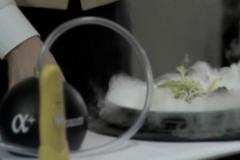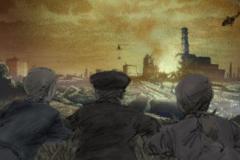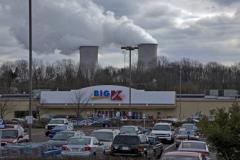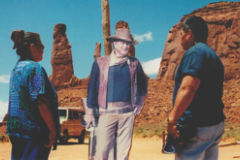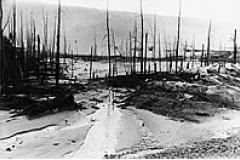Berlin & Passau
PROGRAMM BERLIN 2014
KINO BABYLON
Rosa-Luxemburg-Str. 30 - Phone: 0049 - 30 - 24 25 969
Japan, 2013, 71 min, Japanese and English, English/Arabic subtitles
Documentary
The award-winning film A2-B-C is named for the different stages of growth of thyroid cells from harmless cysts to cancer. Many children in Fukushima were never evacuated after the nuclear meltdown on March 11, 2011. Now the number of Fukushima children found to have thyroid cysts and nodules is increasing. What will this mean for their future? „There is no way for us to escape from this fear. We’re not only worried about external radiation exposure, but also about internal exposure. So we’re testing all the food.“
Q&A with Ian Thomas Ash + N.N. (Amman 2014)
Germany, 2012, 4 min, no dialogue
Animation
World Premiere
Animated short film about Fukushima children who can't play outside. About their dreams and realities.
Bachelor in 2012 of Shoko Hara and Paul Brenner
Sound design and Music: Lorenz Schimpf
Teachers: Prof. Klaus Birk, Alexander Hanowski, Martin Hesselmeier
DHBW Ravensburg, Studiengang Mediendesign
Director Paul Brenner present, Munich 2013
Poland, 2013, 5 min
Animation
"After All is the best animated film of the Uranium Film Festival 2014. The film by Bogna Kowalczyk shows us through the metaphor striptease the hazards of radioactivity and nuclear power.”
YELLOW OSCAR WINNER 2014
UK/The Netherlands | 2011 | 13 min | Art & Experimental documentary
Director: Peter Greenaway, Video Design Irma de Vries
Producer: Change Performing Arts www.changeperformingarts.com | Language: Multilingual
Synopsis: Very surprisingly from 1945 to 1989 there have been 2201 atomic bombs dropped on the planet Earth - an astonishing number of atomic bombs implying huge destruction and fall-out. The film shows evidence of every bomb explosion documented with the nation responsible, the date and location, the force and the height about earth or sea level in a relentless build up of accumulating destruction that is both inspiring and dreadful in the true biblical sense of the phrase - full of dread.
Video: https://www.youtube.com/watch?v=Mc3EKAszRAw
Awards: International Uranium Film Festival Hors Concours Award, Rio de Janeiro 2012
Germany, 2012, 29 min
Documentary
There are now about 300,000 tons of highly radioactive waste worldwide that must be safely stored. But how should we manage this problem - without any permanent disposal site? The film follows different people who try to find solutions. Two worlds are clashing. While the citizens in the German Wendland region for decades fight against the construction of a permanent waste storage site in their region (Gorleben), a small town in Sweden, Östhammar, has put an application to host such a nuclear waste storage site.
Germany, 2010, 11 min, German/Portuguese subtitle
Production: Strahlendes Klima
Latin American Premiere
It is a short film about uranium mining and environmental racism in Niger, Namibia and the United States of America.
www.strahlendesklima.de/augenhoehe/
Deutschland, 2013, 8 min
Produktion SWR
Im letzten Irak-Krieg verschossen die Alliierten hunderte von Tonnen uranhaltiger Munition. Die panzerbrechende Waffe wirkt noch nach Jahren. Eine Reportage über die Spätfolgen des Krieges.
Germany, 2006/2007, 93 min, German
Director: Frieder F. Wagner, Email: ochowa-film@t-online.de
The film accampanies Prof. Guenther, specialist for tropic diseases and epidemiologist, and his expert colleagues as they research on the effects of depleted uranium ammunition used in Iraq, Kosovo, Bosnia, although long since banned ba Hague and Geneve Conventions. The ammunition penetrates steel like a knife slices butter and then explodes into radioactive nanoparticles that disperse: Winds can carry them clear across our planet. Unnoticed by all in contact with them, they flow through bodies like water through a sponge, leaving behind a path of destruction through the cells they crossed. In their search for contaminated battle fields. Prof. Guenther and fellow scientists discover, for example in Iraq, areas, in which radioactive contamination is 30.000 times higher than Earth's natural radiation level.
Frieder Wagner is present during the screening.
(Dii'go To Baahaane)
USA | 2012 | 33 min | Documentary
Directors: Deborah Begel and David Lindblom
Executive Producers: Dr. Johnnye Lewis and Chris Shuey
Original language : Navajo & English | Subtitles: English
This documentary is a four part meditation on the Navajo people’s problems with contaminated drinking water. Nearly one out of three people in the Navajo Nation struggle with this issue. Four Stories About Water opens with a waterfall of people who reveal the scope of water contamination problems on Navajo lands, from the health problems that were likely caused by uranium tailings left uncovered to the view of water as “a spiritual element” to the fact that 30% of the Navajo people don’t have access to safe water. «For us Diné people, if we treat water with respect and have spiritual faith, water will respect us. In this way, we will go forward in a balanced and harmonised life. » David Begay
Deutschland, 2013, 87 min
Endstation Krasnokamensk. Kurz vor der chinesischen Grenze, tief in der sibirischen Steppe endet die Bahnstrecke. Als hier vor 40 Jahren Geologen Uran fanden, wurde die „geheime Stadt“ Krasnokamensk gegründet. Dieser Ort existierte lange Zeit auf keiner Landkarte. Heute ist dort Asiens größte Uranmine und ein Straflager. "Verstrahlt, verdammt, verlassen." Das war das einhellige Urteil über die Stadt, als sie durch die Verbannung des Oligarchen Chordorkowskij für kurze Zeit in den Focus der Weltpresse gelangte. Ein Heimatbesuch. Olga Delane lebte 16 Jahre in Krasnokamensk. Radioaktivität war damals kein Thema.
http://www.olgadelane.com/film/film1.html
Regisseurin Marianne Kapfer anwesend
Ukraine, 2011, 11 min
Sand-Animation film, no dialogue
The film was created in sand animation technique as a tribute to those who died immediately or was dying a slow death for years or who today is seriously ill having received the radiation dose as a child. Chernobyl consequences, we see them today, the increasing number of cancer patients, especially among children in my country. These are the children of my peers, peers of Chernobyl catastrophe. Every event of our times and each event of the past should teach us: The main thing is to remember.
Australia, 2013, 86 min, English
Production Peter Kaufmann
FALLOUT explores the impulses of novelist Nevil Shute who predicted a nuclear war in his visionary novel On the Beach, and its adaptation by Stanley Kramer into a Hollywood movie. Filmed in Melbourne in 1959, it starred Gregory Peck and Ava Gardner. The production was a media circus, the public thrilled at the sight of the stars Ava and Gregory, but it ended in acrimony for Shute and Kramer. Meanwhile the Eisenhower administration, fearing the impact of the reality of nuclear war on the American people, attempted to obstruct the film's production and discredit it on release. FALLOUT pays tribute to Shute's cautionary tale for the potential of nuclear disaster, and the galvanising impact of a terror to which we have now become strangely inured. FALLOUT not only reveals the untold story of ON THE BEACH but also explores the resonance of both the novel and the film in the post Fukushima age as Shute’s prophesy becomes eerily prescient once again...
(Irak: Les Enfants Sacrifiés De Falluja)
Irak/France | 2011 | 48 min | Documentary
Director: Feurat Alani | Producer: Baozi Production
Original Language: English and French
In 2004, Fallujah in Iraq became the theater of a major showdown between american army and iraq insurgents. But what the american used in this war is secret. What kind of weapons did they drop? For now and since 2005, deformed babies are born. What really happened in Fallujah? Is depleted uranium the cause of the health problem?
Film website: http://www.baoziprod.com/New/?p=3440
Director's Blog: http://feuratalani.blogspot.com.br
Awards:
Investigation award and Remand Center Award in Grand Scoop Festival in Lille, 2011
Freedom and human rights Award in Al Jazeera Festival in Qatar in April 2012
International Committee of the Red Cross Award in Monte-Carlo’s Festival in June 2012
Public Award and Jury Award in Khouribga Documentary Film Festival (Morocco), 2012
Taiwan, 2013, 65 min, Mandarin &Tao, English subtitles
Documentary
There are 3 nuclear power plants in Taiwan, the Island which lies 180 kilometres off the coast of mainland China. Taiwan's government has built the nuclear plants for economical development, but it dumps the nuclear waste onto the indigenous lands. One of the „nuclear“ night-mares is the nuclear waste storage site on the Island Punsu no Tao, „Orchid Island“. It was build without consulting the Island‘s indigenous Tao people. For years they protest against the nuclear waste storage site.
Germany | 2013 | 92 min | Fiction
Director Michael von Hohenberg | Producer: White-Lake-City
Original Language: German | Subtitles : English
Film production: www.white-lake-city.de
Awards:
Yellow Oscar 2014, Fiction/Student Production
Atomic War! What will happen in a small town in the middle of Germany? People enter the bunkers. But there is space only for a few. The movie is a project by the “Jugendfilmprojekte Oberfranken”. It was shot in original bunkers in the Bavarian region Oberfranken with many young people, shooting their first professional movie. www.jugendfilmprojekte.de/projekte/final-picture/.
Italy | 2013 | 64 min | Documentary
Director: Alessandro Tesei |
Producer: Teatro Primo Studio – Film Beyond, www.teatroprimostudio.it
Original Language: Italian | Subtitles: English
Synopsis: A travel both into the “No Go Zone” of Fukushima and in Japanese people’s feelings and believes after the reaction to nuclear disaster. March 11, 2011: Japan was struck by one of the most violent earthquakes ever recorded then proceeded by a Tsunami. Waves exceeded every security barrier and damaged Fukushima’s Central Nuclear Power Plant provoking huge amounts of radioactive particles throughout Japan. A restricted area with a 20 km diameter, the No-Go Zone, was immediately evacuated and declared an off-limits territory. Seven months after the disaster photographer Alessandro Tesei succeeded in entering the forbidden area. Fukushame has gathered images from Tesei’s trip, numerous interviews of both common people and politicians and special contributions of scientific explanations of great significance.
Trailer https://vimeo.com/73935463
Film website: http://www.alessandrotesei.com/#!video/c1y3c
Awards:
ENERGY AWARD - Cinema Verde Film Festival 2013 (USA)
YELLOW OSCAR, BEST FEATURE DOCUMENTARY, International Uranium Film Festival 2014
(Herr Hoppe und der Atommüll)
Germany, 2011, 4 min
Producer Filmakademie Baden – Württemberg
Animation
A barrel of nuclear waste drops into the living room of Herr Hoppe an average suburbian German. He has to get rid of it and does it in his own wacky way.
USA, 2011, 109 min, English with German subtitles
Documentary
In My Lifetime features moments in our history as well as current issues regarding nuclear weapons. This film is meant to be a wakeup call for humanity, to help develop an understanding of the realities of the nuclear weapon, to explore ways of presenting the answers for "a way beyond" and to facilitate a dialogue moving towards resolution of this Gordian knot of nuclear weapons gripping the world. The documentary's characters are the narrative voices, interwoven with highly visual sequences of archival and contemporary footage and animation. The story is a morality play, telling the struggle waged over the past six and half decades with the last act yet to be determined, of trying to find what is "the way beyond?"
UK | 2013 | 10 min | Documentary
Director: Margaret Cox,
Language: English | Subtitles: French
Trailer in French: https://vimeo.com/120620416
Synopsis: “Inheritance” tells the story of the British re-colonising of Africa, through Lonrho's resource wars, and the British involvement in the use of Depleted Uranium in the Iraq war. A collation of new material from Heathcote Williams' Anarcho-Pacifist poem "Royal Babylon: The Criminal Record of the British Monarchy,” “Inheritance” profiles the complex web of British Royal finances, their dangerous sources, and their damaging consequences. Focusing on the use of Depleted Uranium, we wanted to add our voice to the protest against the use of chemical weapons, and support the call for accountability over continued Human Rights abuses, through environmental contamination.
Switzerland, 2013, 100 min
Documentary
Produktion: Mira Film GmbH
Lethal, highly radioactive nuclear waste from decades of nuclear power use will endure for centuries. Locating a final repository for the waste is one of the big challenges facing the world. The film examines the limitations and contradictions of this global quest. Nuclear power advocates and opponents face up to this responsibility and struggle for solutions.
www.diereisezumsicherstenortdererde.ch
https://vimeo.com/75918238
Award: Special Recognition of the Uranium Film Festival
Deutschland/ Taiwan, 2013, 9 min
Animationsfilm
Das Wort Kern hat wie im Chinesischen zwei Bedeutungen. Zwei junge Trickfilmer aus Taiwan reflektieren in Deutschland über Kernenergie.
REGISSEURE ANWESEND (Berlin 2014).
Deutschland, 44 min
ZDF, Phoenix
Film über die ökologischen Folgen von Krieg. Eine Schlacht ist die intensivste Form des Ressourcenverbrauchs. Das oberste Ziel im Krieg ist es, den Gegner zu schwächen, ihn zu besiegen. Auch, indem man seine Lebensgrundlagen zerstört. Wirklich "nachhaltig" geschah dies erstmals im Ersten Weltkrieg. Durch die Massenproduktion chemischer Kampfmittel gab es die Möglichkeit, den Lebensraum des Feindes mitsamt allem Leben darin zu töten. Die Strategie der Vernichtung von Umwelt setzte sich im Zweiten Weltkrieg fort und gipfelte in einem Krieg, den die Weltmacht USA gegen ein kleines kommunistisches Land in Asien nicht gewinnen konnte: Vietnam. Die Spuren eines Ökozids, der fast ein halbes Jahrhundert zurückliegt, erzählen von den dramatischen Spätfolgen von "Agent Orange," von missgebildeten Kindern und doppelköpfigen Büffeln. Erst heute beginnt die US-Regierung, die Dioxinbelastung der Böden in Teilen zu beseitigen. Ein riesiges ökologisches Problem sind aber auch militärische Kampfmittel, die nie eingesetzt wurden. Auch Munition hat ein Verfallsdatum. Rückbau und Entsorgung von Überproduktion sind nie wirklich kalkuliert worden.
USA | 2012 | 87 min | Documentary
Director: : Adam Jonas Horowitz
Original Language: Marshallese & English | Subtitles: French / Spanish
Featuring recently declassified U.S. government documents, survivor testimony, and unseen archival footage, Nuclear Savage uncovers one of the most troubling chapters in modern American history: how Marshall islanders, considered an uncivilized culture, were deliberately used as human guinea pigs to study the effects of nuclear fallout on human beings.
Between 1946 and 1958 the United States tested 67 nuclear weapons above ground on or near Bikini and Enewetok atolls. The hydrogen bomb was 1000 times more powerful than the Hiroshima bomb. Entire islands were vaporized and populated islands were blanketed with fallout. As the film shows, the heavily exposed people of Rongelap were then enrolled as human subjects in the top-secret Project 4.1 and evacuated to a severely contaminated island to study the effects of eating radioactive food for nearly 30 years. Many of the Marshall Islanders developed cancers and had babies that were stillborn or with serious birth defects.
Nuclear Savage follows the islanders today as they continue to fight for justice and acknowledgement of what was done to them. Despite recent disclosures, the U.S. government continues to deny that the islanders were deliberately used as human guinea pigs. The film raises disturbing questions about racism, the U.S. government’s moral obligation to the people of the Marshall Islands, and why the government is continuing to cover up the intent of the tests and Project 4.1 after several decades.
Awards:
AUDIENCE AWARD, Best Film Cinema Planeta International Festival, Mexico
JURY PRIZE, Best Feature Documentary, Paris/FIFE International Festival of Environmental Films
JURY PRIZE, Chicago Peace on Earth Film Festival
YELLOW OSCAR, Best Feature Documentary, International Uranium Film Festival Rio 2013
More information:
http://ncronline.org/blogs/eco-catholic/yellow-oscar-goes-documentary-ex...
http://www.veteranstoday.com/2014/01/24/americas-nuclear-radiation-cover...
http://www.globalresearch.ca/media-coverup-of-impacts-of-u-s-nuclear-wea...
Irland, 2012, 5 min
Animation
A ship dumps its cargo of nuclear waste in the Arctic, stirring something strange up from from the depths...
Germany, 2013, 9 min, English subtitles
Animation
The German word "Kern" can mean core as well as nucleus. In Chinese it has the same ambiguous meaning. Atomic energy is the most beautiful myth of the 20th century. After Fukushima two Taiwanese artists compare nuclear policy in Germany, Japan and Taiwan and reflect upon the contradictions of nuclear energy at the social level.
Director present (Berlin 2014).
(Sardiniens tödliches Geheimnis)
Germany, 2012, 30 min
Documentary
Birth deformities and deaths in paradise: Sardinia is considered storybook island with beautiful sandy beaches and crystal clear water. What hardly anyone knows: NATO's largest military training area in Europe, "Poligono Interforze Sperimentale del Salto di Quirra" is located on the Mediterranean island . Around the restricted area in eastern Sardinia occur on many unusual deformities and diseases. Possible Cause: uranium munitions.
After the film:
"Military bases in Sardinia". Lecture & Discussion with Pitzente Bianco, cultural ambassador of Sardinia.
Pitzente Bianco ZDF supported the ZDF film team during the shooting of "Sardiniens tödliches Geheimnis" support during the shooting of.Salto di Quirra is the largest NATO training area in Europe. "Who can afford the necessary rent, may undertake all kind of weapon tests, even companies."
USA, 2012, 12 min, English
Documentary
Just outside Grants, New Mexico, is a 200-acre heap of toxic uranium waste, known as tailings. After 30 years of failed cleanup, the waste has deeply contaminated the air and water near the former uranium capital of the world. TAILINGS is a cinematic investigation into the pile that is gravely shaping the lives of those who are stuck living in its shadow.
TRAILER: http://tailingsfilm.com
TAILINGS won the Best New Mexico Short Award of the Santa Fe Independent Film Festival.
Norway, 2013, 8 min, Danish, Norwegian with English Subtitles
Documentary
On 25 October 2013 the Greenlandic parliament narrowly voted to lift a 25 year ban on the mining of uranium which it inherited from Denmark, its former colonial power.The short film ”To Dig or Not to Dig” tells the story about the small town of Narsaq in South Greenland, which is in the centre of the global battle for minerals. The Australian mining consortium Greenland Minerals and Energy is doing what they can to start digging for deposits of rare earth, used in mobile phones, aircraft engines, telescopes and other high tech devices, in the Kvanefjeld mountains close to the town. Espen Rasmussen visited Greenland to meet both sides of the debate.
USA, 2012, 70 min
Production: Reelthing
The promise of jobs from a proposed uranium mill has an economically devastated mining community in Colorado hopeful for the first time in decades. When environmentalists step in to stop the mill, pro-mill advocates are enraged. A debate ensues, pitting jobs against health and the environment.
Without judgment, both sides of the issue are brought to life in heart-wrenching detail as the film follows conflicting visions for the future. The film offers no easy answers but aims instead to capture personal stories and paint a portrait of the lives behind this nuanced and complex issue.
Site: http://www.uraniumdrivein.com/
Australia, 2011, 12 min, English
Documentary
Produktion Frontline Films
Wake up is a must-see short movie about nuclear power & uranium mining in Australia. The film is presented by famous Australian actor Tony Barry
Australia, 2011, 12 min, Englisch
Dokumentarfilm
Produktion Frontline Films
Uranabbau und Atomindustrie in Australien, Sandstürme mit radioaktivem Staub. WAKE UP mit dem australischem Filmstar Tony Barry als Komentator ist ein "atomarer" Kurzfilm zum Aufwachen!
Suíça, 2013, 50 min, alemão, legendas em inglês
Documentário
Classificação indicativa 12
Turismo em Chernobyl: organizado pela agência de viagens Kuoni Travel, um grupo de turistas visita a zona radioativa.
UK, 2011, 7 min
Director: Campaign Against Depleted Uranium e IKP PAX Christi
Suitable for audiences 16 years and over
Not part of the Competition
Film on the impact of depleted uranium weapons, the current state of international politics and the campaign against them.
Germany, 2013, 44 min
Documentary
Whyl, 19th of July 1973. The inhabitants of the small village are surprised by the radio news: an Nuclear Power Plant is about to be build nearby. Within a short time the local people began their fight against this plans. The Nuclear Power Plant in Wyhl was never built.
"What happened 40 years ago in the region of Kaiserstuhl is unique in the history of Germany. For the first and only time citizens prevent to build a nuclear power plant." - Goggo Gensch
Germany | 2010/2014 | 35 min (Short version) | Documentary
Director: Joachim Tschirner
Original Language: English
Web site: www.umweltfilm.de
This new short version of the feature documentary "Yellow Cake. The dirt behind Uranium" focuses on a secret uranium mine in East Germany, that produced for decades yelllow cake for the Sovjet Union's atomic bombs. It was the third largest uranium mine in the world, located in the provinces of Saxony and Thuringia. Operating until the Reunification, it had the code name WISMUT - German for bismuth. The film tells the history of the Wismut and accompanies for several years the first clean-up operation in the history of uranium mining.
Film website: www.yellowcake-derfilm.de
Awards:
YELLOW OSCAR, Best Short Documentary, International Uranium Film Festival Rio 2014
USA, 2010, 27 min, English
Fiction
Winter 1943. U 222 is being deployed to haul 10 tons of uranium to Japan for a joint SS and Japanese atomic bomb project. The U Boat's Captain, Christian Wolff is a one of the last veteran U Boat commanders and not a fan of the radical ideologues in the SS nor does he subscribe to the fanatical beliefs of the Nazi Party. Only he is in a position to stop the uranium cargo from reaching it's destination. Film Director Edward Saint Pe' is an actor and producer, known for The Big Easy - Der große Leichtsinn.
INTERNATIONAL URANIUM FILM FESTIVAL PASSAU IM SCHARFRICHTER KINO, MILCHGASSE 2
Kartenvorverkauf und das komplette Programm hier: www.cineplex.de
Uranium Film Festival Passau wird zusammen mit dem Energienetzwerk Passau und der ÖDP Passau veranstaltet.
Germany, 2012, 4 min, no dialogue
Animation
World Premiere
Animated short film about Fukushima children who can't play outside. About their dreams and realities.
Bachelor in 2012 of Shoko Hara and Paul Brenner
Sound design and Music: Lorenz Schimpf
Teachers: Prof. Klaus Birk, Alexander Hanowski, Martin Hesselmeier
DHBW Ravensburg, Studiengang Mediendesign
Director Paul Brenner present, Munich 2013
(Atomny Ivan)
Russia, 2012, 91 min, Russian, English subtitles
Production: Telesto Film Company
Romantic Comedy
That is a plane story of people from the future which is getting to be real nowadays. The heroes are beautiful and helpless, but they continue to fight for their own happiness and purport. The story takes place in the town where the nuclear engineer may live in one apartment with his mother, the nuclear engineer and his grand-mother – the pioneer of nuclear industry. The story is really outstanding, it is about Ivan and Tania, Tania is interested in her science carrier and Ivan is not interested in anything, but Tania. The new third hero makes heroes to wake up. A lyrical comedy.
Producer Victoria Gromik present, Munich 2013
Germany | 2013 | 92 min | Fiction
Director Michael von Hohenberg | Producer: White-Lake-City
Original Language: German | Subtitles : English
Film production: www.white-lake-city.de
Awards:
Yellow Oscar 2014, Fiction/Student Production
Atomic War! What will happen in a small town in the middle of Germany? People enter the bunkers. But there is space only for a few. The movie is a project by the “Jugendfilmprojekte Oberfranken”. It was shot in original bunkers in the Bavarian region Oberfranken with many young people, shooting their first professional movie. www.jugendfilmprojekte.de/projekte/final-picture/.
(Halbwertszeit)
Germany, 2012, 20min, English subtitles
Production: Bauhaus-University Weimar
Science fiction
In the year 2022: After a serious meltdown in a German nuclear power plant the soil is contaminated and people live in constant threat of radioactive fallout. Low radiation vegetables are so precious that they can be proffered only in fine restaurants. Those can be ordered by the mysterious "Black Card".
So imagine how satirically: A story of a future where the food comes before morality.
(Herr Hoppe und der Atommüll)
Germany, 2011, 4 min
Producer Filmakademie Baden – Württemberg
Animation
A barrel of nuclear waste drops into the living room of Herr Hoppe an average suburbian German. He has to get rid of it and does it in his own wacky way.
Germany / Ukraine, 2011, 19 min, Russian, English Subtitles
Animated documentary
Producer: Tetyana Chernyavska
Yellow Oscar Best Animation Film 2012
A Soviet family searching for a modest paradise is swept into an immense disaster. This magically animated film combines drawing, photography and documentary video to capture the surreal emotions of the too-real tragedy: Chernobyl 1986.
USA, 2011, 92 min, English
In 2010, the United States announced the first new nuclear power plant construction in over 32 years. The "Nuclear Renaissance" was born, and American's long stared expasion of nuclear energy was infused with new life.
Iran, 2013, 6 min, without dialog
Animated fiction
Special Achievement Award 2013
A world war had been destroyed the entire civilization. Everybody is wondering around lost, neglecting each other. Until one day a young girl finds the last flower on earth. Excited from her discovery she runs to people to tell them about the flower, but people do not care. At last a young man shows interest to the story. Together they take care of the flower and fall in love. With love, the entire planet grow and people begin to build civilization again. Meanwhile the war machine factories appear and the story of war begin again...
USA 2000/2008 | 57 min and 15 min Epilogue | Documentary
Director: Jeff Spitz | Produced by Jeff Spitz and Bennie Klain
The film chronicles an extraordinary chain of events, beginning with the appearance of a 1950s film reel, which lead to the return of a long lost brother to his Navajo family. Living for more than six decades in Monument Valley (on the Arizona/Utah border), the Cly family has an extraordinary history in pictures. Since the1930′s, family members have appeared as unidentified subjects in countless photographs and films shot in Monument Valley including various postcards, Hollywood Westerns and a rare home-movie by legendary director John Ford. But it is the sudden appearance of a rarely seen vintage film that affects their lives the most. With the return of “Navajo Boy,” Elsie seizes the opportunity to tell her family’s story for the first time, offering a unique perspective to the history of the American west. Using a variety of still photos and moving images from the 40s and 50s and telling their family story in their own voices, the Clys shed light on the Native side of picture making and uranium mining in Monument Valley.
The Return of Navajo Boy, an official selection of the Sundance Film Festival and PBS, is an internationally acclaimed documentary that reunited a Navajo family and triggered a federal investigation into uranium contamination. It tells the story of Elsie Mae Begay, whose history in pictures reveals an incredible and ongoing struggle for environmental justice. A powerful new epilogue (produced in 2008) shows how the film and Groundswell Educational Films’ outreach campaign create news and rally supporters including Congressman Henry Waxman (D-CA). The Chairman of the Committee on Oversight and Government Reform mandated a clean-up plan by the five agencies that are responsible for uranium contamination.
The documentary, epilogue and now 15 webisodes have leveraged several remarkable impacts: Bernie Cly, one of the Navajo family featured, has been awarded $100,000 in compensation from the US government; the EPA demolished a dangerous house made out of uranium which was featured in the film and completed its $8 million dollar clean up of the abandoned uranium mine located in the backyard of the Navajo family featured in the documentary. The most recent webisode in April 2014, informs viewers that the Navajo tribe won the largest environmental settlement in American history, $1 billion payout from Kerr-McGee, the corporate contaminator exposed by the documentary.
Filmwebsite: www.navajoboy.com
Awards:
2000, Best Documentary, Indian Summer Festival
2000, Programmer's Choice Award, Planet in Focus Film Festival, Canada
2000, Audience Award, Durango International Film Festival
2000, Official Selection, Sundance Film Festival
Canada | 1990 | 48 min | Documentary
Director: Magnus Isacsson (1948 - August 2, 2012) | Producer: National Film Board of Canada
Language: English and French
Synopsis: This film exposes the ethical and environmental problems which surround the practice of uranium mining in Canada. The film delivers some hard-hitting and little known facts about the detrimental impact of uranium mining on the environment as well as on the health of those employed in the industry. Toxic, radioactive waste is a severely detrimental by-product of uranium mining, which has been proven to cause profound, long-term environmental damage. The same radioactive waste puts the miners at extreme risk for developing cancer. Finally, because most of the mining to date has been conducted on land historically used by Canada's Native populations, uranium mining violates the traditional economic and spiritual lives of many aboriginal peoples.
Film info: www.socialdoc.net/magnus
Trailer: https://www.nfb.ca/film/uranium
Awards:
Golden Sheaf Award at the Yorkton Film Festival in 1991
Germany | 2010/2014 | 35 min (Short version) | Documentary
Director: Joachim Tschirner
Original Language: English
Web site: www.umweltfilm.de
This new short version of the feature documentary "Yellow Cake. The dirt behind Uranium" focuses on a secret uranium mine in East Germany, that produced for decades yelllow cake for the Sovjet Union's atomic bombs. It was the third largest uranium mine in the world, located in the provinces of Saxony and Thuringia. Operating until the Reunification, it had the code name WISMUT - German for bismuth. The film tells the history of the Wismut and accompanies for several years the first clean-up operation in the history of uranium mining.
Film website: www.yellowcake-derfilm.de
Awards:
YELLOW OSCAR, Best Short Documentary, International Uranium Film Festival Rio 2014

